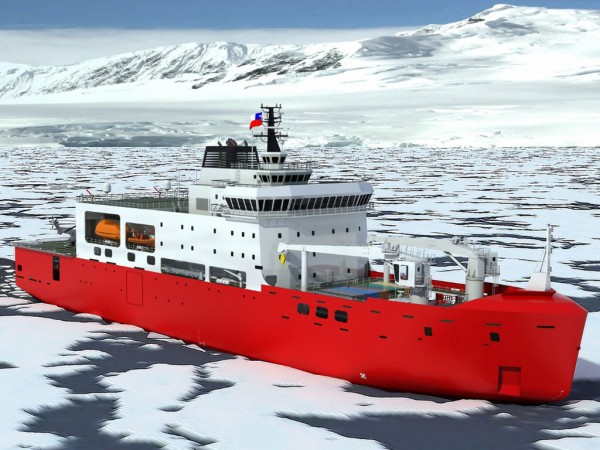Responding to the release of a new White Paper: The International Maritime Organization’s Proposed Arctic Heavy Fuel Oil Ban: Likely Impacts And Opportunities For Improvement by the International Council on Clean Transportation (iCCT), Clean Arctic Alliance Lead Advisor Dr Sian Prior said: “Now it’s clear the IMO’s proposed ban on HFO use in the Arctic is a ban in name only”.
“Not only is it outrageous that the proposed International Maritime Organization ban includes exemptions and waivers which, as this new report shows, would allow 84% of the HFO used by Arctic shipping to still be burned, and 70% of the current HFO fuel volume on board vessels in the Arctic to still be carried, but we are also concerned that the regulation could result in lower standards being applied to ships flying Arctic coastal State flags and greater risks in the vulnerable inshore waters that are most important for Indigenous communities.”

“If an Arctic country can waive the ban for its own ships, but is required to enforce the ban for all ships flying other flags in their waters, an unlevel playing field will have been created. In addition, waiving the ban for its own ships could compromise an Arctic coastal country’s ability to ensure that activities under their control do not cause damage to the waters and environment of neighbouring countries, or that pollution does not spread to neighbouring countries.”
“In addition, since the exemptions apply to newer ships, the continued use and carriage of HFO in the Arctic is likely to increase after the ban takes effect, as older ships are removed from the fleet and newer ships with protected fuel tanks replace them. This is simply not good enough, it doesn’t provide the Arctic, its ecosystem, wildlife and communities with the protection it so desperately needs. The Clean Arctic Alliance is calling for the draft regulation to be strengthened and for exclusions and waivers to not be allowed.”
“We share the concerns of Arctic communities about the potential socioeconomic costs of banning the use and carriage of HFO in the Arctic, but believe that there are clear socio-economic benefits of eliminating HFO spills in the Arctic, so the Clean Arctic Alliance calls on national governments to support the transition from HFO to alternative fuels to mitigate any negative socio-economic impacts for northern communities.”
“The Climate Crisis is having a direct impact on the Arctic, and will have serious repercussions further south. With temperatures hitting 38 degrees Celcius north of the Arctic Circle in June, summer sea ice at its lowest extent ever through July and the Northern Sea Route along Russia’s Arctic coastline open in July for the first time ever, and scientists predicting summers with no sea ice by 2050, the Clean Arctic Alliance is calling on the International Maritime Organization to put in place an effective and credible ban on the use of carriage of heavy fuel oil from Arctic shipping”, said Prior [3].
Country Specific Finding
Russia
The ICCT Report reveals that Russian-flagged ships used 287 kt of HFO, representing about two-thirds of HFO used in the Arctic in 2019. Based on 2019 data, only 7 kt of Russian-flagged ships’ HFO use would be banned if the HFO ban regulation is adopted including exemptions and waivers - more than 97% of the current HFO use by Russian-flagged ships would still be allowed in the Arctic.
Denmark
The ICCT Report reveals that Danish-flagged ships used 16 kt of HFO, representing 4% of the total HFO used in the Arctic in 2019. Based on 2019 data, only 1 kt of Danish-flagged ships’ HFO use would be banned if the HFO ban regulation is adopted including exemptions and waivers - 94% of the current HFO use would still be allowed.
Canada
The ICCT Report reveals that Canadian-flagged ships used 15 kt of HFO, representing 3% of the total HFO used in the Arctic in 2019. Based on 2019 data, only 1 kt of Canadian-flagged ships’ use of HFO would be banned if the HFO ban regulation is adopted including exemptions and waivers - 93% of current HFO use would still be allowed.
Norway
The ICCT Report reveals that Norwegian-flagged ships used 1.5 kt of HFO, representing less than 1% of the total HFO used in the Arctic in 2019. Based on 2019 data, 0.6 kt of Norwegian-flagged ships’ HFO use would be banned if the HFO regulation is adopted including exemptions and waivers - 60% of current HFO use would still be allowed.
United States
The ICCT Report reveals that United States-flagged ships used less than 1 kt of HFO, representing less than 1% of the total HFO used in the Arctic in 2019. Based on the 2019 data, 0.6 kt of U.S.-flagged ships’ HFO use would be banned if the HFO regulation is adopted including exemptions and waivers - 30% of the current HFO use would still be allowed.









